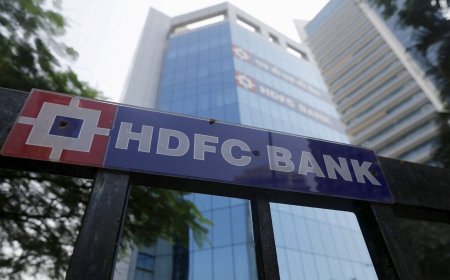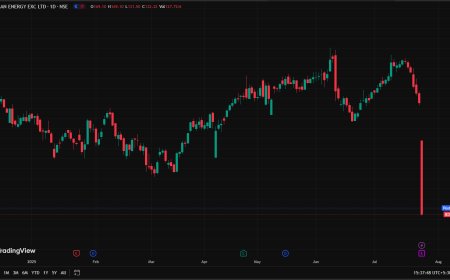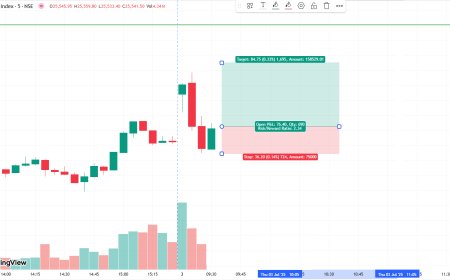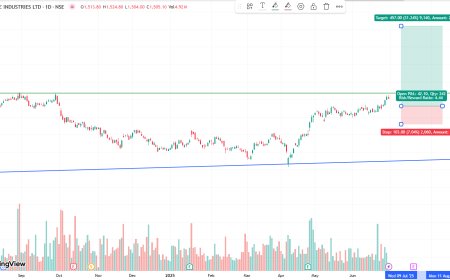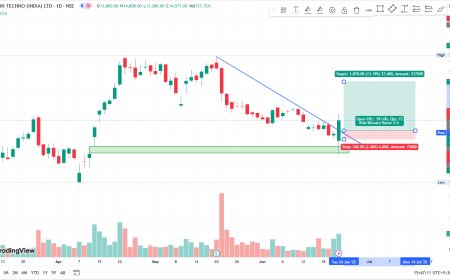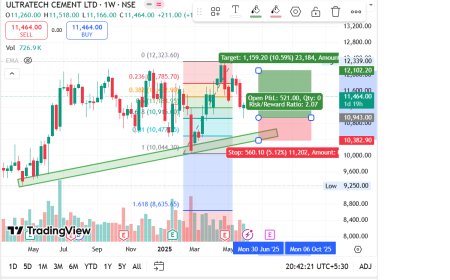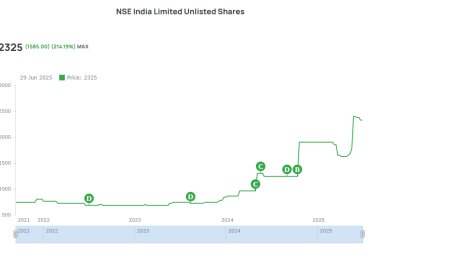Indian Bonds Shine on Global Radar Amid Rate Cut Bets and Stable Macros
Indian bonds are gaining global investor attention as falling US yields, stable inflation, and strong macros make India’s debt market more attractive.

🇮🇳 Indian Bonds Shine on Global Radar: What’s Fueling the Rally?
India’s government bond market has emerged as a global standout, drawing increasing interest from foreign investors amid a changing macroeconomic backdrop. As the narrative of peak interest rates gains ground worldwide, particularly with growing expectations of Federal Reserve rate cuts, Indian bonds are finding themselves in a sweet spot—offering stability, yield, and growth in a single package.
With consistent foreign inflows, improving fiscal metrics, and the upcoming inclusion into J.P. Morgan’s Government Bond Index – Emerging Markets (GBI-EM), India’s fixed income landscape is now firmly on the global radar.
Global Context: A Search for Yield in a Softening World
Global bond markets are undergoing a pivotal shift. After two years of aggressive monetary tightening, developed market central banks are signaling a pivot. The Federal Reserve, European Central Bank (ECB), and Bank of England (BoE) are all hinting at possible rate cuts in late 2025, assuming inflation continues to cool and labor markets ease.
The U.S. 10-year Treasury yield has declined from its 2023 highs of over 5% to around 4.25%, while German Bunds have also softened. In this environment, institutional investors are reallocating toward higher-yielding emerging markets, and India is shining as a relatively low-risk, high-return option.
Why India?
-
High real yields: Inflation-adjusted returns are among the best in EM space
-
Macroeconomic resilience: 7% GDP growth forecast, low fiscal slippage
-
Stable currency: INR remains within a tight, manageable band
-
Credible central bank: The RBI has built a strong inflation-fighting track record
FPI Flows Surge Into Indian Debt
According to data from NSDL, Foreign Portfolio Investors (FPIs) have poured in over ₹32,000 crore ($3.8 billion) into Indian debt so far in FY26, compared to just ₹7,200 crore in the same period last year. The inflows are broad-based across G-Secs, State Development Loans (SDLs), and corporate bonds.
The Fully Accessible Route (FAR) bonds, which are eligible for unrestricted FPI access, have been the biggest beneficiaries of this inflow.
"The return of FPI interest is a clear signal of India’s maturing bond market. With hedging costs dropping and yields staying elevated, global investors are rediscovering Indian debt,” says Vikram Rao, Head of Global Macro Strategy at Axis Capital.
Yield Compression: A Bullish Signal
India’s 10-year benchmark bond, the 7.26% 2033 G-Sec, has seen yields compress from 7.35% to 7.05% in a matter of weeks. Dealers attribute this to rising demand, easing inflation prints, and anticipation of a future rate cut from the Reserve Bank of India (RBI).
Shorter-duration bonds have seen even stronger price action, with 5-year G-Secs hovering around 6.85%, indicating a bullish steepening of the yield curve.
This compression in yields reflects investor confidence that macro stability is entrenched and that India is unlikely to face major inflation or fiscal shocks in the short to medium term.
RBI’s Steady Hand: Confidence Builder
The RBI has kept the repo rate steady at 6.50% for six consecutive meetings. Despite market expectations of a rate cut later this year, the central bank has remained cautious and data-dependent.
This conservative stance has helped anchor inflation expectations while also avoiding the risks of premature easing.
-
Headline inflation in April came in at 4.83%, well within the RBI’s comfort zone
-
Core inflation continues to ease, down to 3.2%
-
Food price volatility remains the only major risk, contingent on monsoon outcomes
The RBI has also tactfully used liquidity tools to keep overnight rates aligned with the policy corridor, allowing for smoother bond market functioning.
GBI-EM Inclusion: Structural Flows Ahead
India’s inclusion in J.P. Morgan’s GBI-EM index, starting in June 2025, is expected to bring in up to $25 billion in passive inflows over the next 18–24 months. This will be a structural source of demand for Indian government bonds, especially FAR securities.
Benefits of index inclusion:
-
Improved market depth and liquidity
-
Lower borrowing costs for the government
-
Higher foreign ownership, improving global visibility
-
Positive FX flows, stabilizing INR further
With Bloomberg-Barclays and FTSE Russell also evaluating India for potential inclusion, the long-term flow picture looks robust.
Government Finances: Stability is Key
A major driver behind the improving bond market sentiment is the fiscal prudence displayed by the central government. The fiscal deficit target of 5.1% for FY26 is seen as credible and achievable.
Moreover, disinvestment receipts, higher-than-expected GST collections, and capex discipline are keeping the borrowing program under control. The market’s ability to smoothly absorb weekly bond auctions—even in the face of supply pressures—is a testament to this confidence.
“The bond market has matured considerably. Government borrowing no longer spooks investors as it did a few years ago,” says Nandita Rathi, Senior Economist at ICICI Securities Primary Dealership.
Currency Dynamics: INR Stability A Big Plus
The Indian Rupee (INR) has remained range-bound, trading between 82.80–83.40 per USD, defying regional volatility. With FX reserves at $650 billion, the RBI has significant firepower to manage any speculative pressures.
For foreign investors, this currency stability means better predictability in hedged returns. Many global funds are now choosing partial or unhedged positions due to lower expected volatility and positive real returns.
Yield Curve Outlook: Steepening to Continue?
The Indian yield curve had flattened considerably in early 2024, but is now showing signs of steepening again:
-
Long-end yields are falling faster than short-end ones
-
Expectation of future rate cuts pushing demand into the 10-15 year bucket
-
RBI’s liquidity infusions and global rate cuts reinforce this structure
This steepening, while still in early stages, suggests growing conviction that easing is on the horizon and that the worst of the inflation fight is behind us.
What Lies Ahead?
Potential Bullish Triggers:
-
Global central banks initiating rate cuts
-
Monsoon normalizing food prices
-
GBI-EM inflows gaining momentum
-
INR appreciation due to capital flows
Risks to Watch:
-
US inflation re-accelerating
-
Oil prices breaching $95/barrel
-
Disruptions in global supply chains
-
RBI turning hawkish again if inflation rebounds
Investor Strategy: How to Play the Bond Rally
With India entering a phase of favorable bond market dynamics, both domestic and foreign investors are looking to optimize their allocations.
For Domestic Investors:
-
Focus on long-duration Gilt funds or Target Maturity Funds
-
Laddered strategies can provide optimal carry and duration
-
Consider tax-efficient avenues like Gilt ETFs or RBI Retail Direct
For FPIs:
-
Preferentially pick FAR securities
-
Monitor hedging costs and currency correlations
-
Watch for further announcements on index inclusions
India's Bond Market Comes of Age
India’s fixed income market is finally getting the attention it deserves. A mix of stable governance, credible monetary policy, fiscal prudence, and global alignment has put Indian bonds in a golden zone.
What was once considered a volatile, illiquid corner of emerging markets has now evolved into a globally investable asset class. As passive and active flows continue to build, expect Indian bonds to not just shine—but lead—among emerging market peers.
What's Your Reaction?
 Like
0
Like
0
 Dislike
0
Dislike
0
 Love
0
Love
0
 Funny
0
Funny
0
 Angry
0
Angry
0
 Sad
0
Sad
0
 Wow
0
Wow
0



























